Amnesia: Rebirth is a first person horror game by Frictional Games, and a sequel to the modern classic Amnesia: The Dark Descent. This is Frictional’s first game in five years, with their previous game being SOMA which we reviewed here.
A first person horror game in 2020, surely it’s a VR title or there’s a VR version, right? Wrong. Rebirth uses a newer version of their HPL engine, which still includes an OpenGL renderer, now upgraded to OpenGL 4.0 – 4.3 according to the system requirements. There isn’t much in the way of technical additions over SOMA, so for those looking for a quality VR horror game, I’m afraid your search must continue.
Frictional Games is known for delivering intense first person horror experiences in which you’re unable to combat the enemy (even though you can fight and kill enemies in their first game, Penumbra: Overture). They’re also known for providing some of the most physically interactive worlds, some of the best sound quality in the business, and one similarity all of their games share is that they all have climactic moments where they force the player to do something terrible.
Expectations seemed to be very high for Amnesia: Rebirth. While SOMA was a masterpiece and easily Frictional’s greatest work to date, it was not the commercial success they deserved. It wasn’t the commercial slam dunk that Amnesia: The Dark Descent was, since timing was everything for that game. With Amnesia: Rebirth, Frictional Games returns to their most popular franchise. Does Rebirth elevate Amnesia to new levels? Does it incorporate more of the brilliance of SOMA and Penumbra? Let’s find out.
This review contains spoilers below.
Gameplay
Once again, in Amnesia: Rebirth you are not able to attack enemies or defend yourself, so this is a no-combat horror game as expected. The reason for this is usually straightforward: the enemies you face are far too powerful. Rebirth has additional reasons though: not only are the enemies too powerful, but they’re too supernatural, not to mention the protagonist is pregnant.
So if there’s no combat, what kind of gameplay mechanics does Amnesia: Rebirth have? It is largely the same as The Dark Descent, but with some twists. First are the survival mechanics. One of the main enemies of Rebirth is darkness, since your character is afraid of the dark just like Daniel in The Dark Descent. The game tells you this from the get go. Throughout the game you’ll be surviving off of matches, which must be used to ignite light sources in the environment, and precious lantern oil, much like The Dark Descent but these items are so much more rare in Rebirth. In The Dark Descent you’ll never run low on light sources, but throughout Rebirth you’ll be painfully low.
Excessive exposure to the dark increases your “fear” level, much like The Dark Descent’s Sanity system but more intense. Your vision not only becomes distorted, you start to hallucinate and the game throws as many audio and visual effects at you to creep you out, and if you stay in the dark for too long, you’ll lose control over your character and black out, which is of course part of the story. Fear can be lowered with ultra rare Laudanum elixirs, for which I used none during my playthrough.
There is an inventory, but there are very few items in the game so inventory management isn’t a big part of this game. Another primary gameplay component is of course the enemies themselves. Amnesia: The Dark Descent only had three (not counting The Shadow or Alexander). Rebirth technically only has two different types (plus The Shadow again as well as another boss fight of sorts), but one of them, the Ghul, has different enough encounters to make it diverse. Enemies in Amnesia: Rebirth come from pre-Islamic Arabian mythology, much like how Penumbra’s enemies come from Inuit mythology. The Ghul is a humanoid creature that dwells in dark, abandoned places, generally fears the light, and can track you based on your fear level, which is one reason why it’s so important to stay in the light and keep your fear under control.
You see many different Ghuls in different states throughout Amnesia: Rebirth. There are your usual scripted chase sequences, there are other times where you have to stealthily maneuver around them (which is made trickier due to the fear mechanic), later in the game you’ll find a room full of largely incapacitated but still dangerous Ghuls, and some Ghuls throughout the game are characters, former companions of yours, retaining their memories and even engaging in dialogue at times. Some of the Ghuls do leave the area or despawn like in The Dark Descent, others do not since the encounter design varies so much.
Near the end of the game you’ll encounter monsters known as Wraiths, also heavily mutated humans, and Frictional’s deadliest monster to date. Drawing influence from SOMA’s Flesher and Penumbra: Black Plague’s infected humans, Wraiths can detect you if you look at them for long enough, and they emit bright lights from their body which they use to search for you, so hiding in the dark is not effective. Being struck by beams of this light can also slow you down. These creatures float through the air, moving quickly and are difficult to escape.
There are also caves that resemble Penumbra’s spider caves, an intentional reference no doubt, just like the some of the illusions you have are similar to the one in Penumbra: Black Plague when Clarence makes his entrance, but thankfully for the arachnophobes there are no actual spider enemies this time.
You can’t fight these monsters, but you can defend yourself from some of their attacks just by mashing WASD and moving the mouse around. Compared to past titles from Frictional Games, there’s a lot less stealth gameplay, a lot less throwing items to use as distractions. Many Ghul encounters pose very little threat to the player; once again Amnesia tricks the player into scaring themselves.
People will inevitably ask, “Is it a walking simulator?” What this really means is, “Does the game have nothing in the way of gameplay mechanics, is it purely story?” The answer is no, but like all Frictional titles, it is very light in gameplay mechanics. They’re all casual games, no hardcore survival horror gameplay here. In terms of gameplay depth, Rebirth is about on par with The Dark Descent; you have to battle darkness much more, but enemy encounters and “puzzles” are simpler and quicker to deal with. Penumbra has the most survival mechanics of any Frictional game, SOMA has the least, but all of them have less brief and usually less scripted enemy encounters than Rebirth. Amnesia: A Machine for Pigs, which is not a Frictional Games title, has far less gameplay mechanics than all of the above (almost none).
It’s not a Frictional Games title without some sort of “puzzle” gameplay, really just practical problem solving like interacting with machinery. Amnesia: Rebirth has the least of this of any Frictional Games title by far, and what it does have is simple so as to not interfere with story pacing. This further adds to the casual nature of the game, so if you want to scare someone who doesn’t normally play games, this is a good game for them to try out.
Those wanting a mechanically involved survival horror experience will probably find Amnesia: Rebirth to be too simple. Even though Frictional Games originally did draw some influence from System Shock 2, the two games are opposites. Fans of Amnesia: The Dark Descent will feel at home here, but they may take issues with the writing of Rebirth, which we’ll go into below.
This is what I was most excited about, and most curious about. Frictional Games has two entries in our list of greatest video game stories, with SOMA being in the top 5. But Amnesia: The Dark Descent was not as ambitious as Penumbra in the writing department; it wasn’t weak, it achieves what it was going for, thematic depth and characters were just a bit less of a focus. SOMA took horror game writing to a completely new level that was never before achieved and hasn’t been since. Where does Amnesia: Rebirth fall on this scale?
Ultimately, Amnesia: Rebirth is closer to Amnesia: The Dark Descent in writing than it is to SOMA, which should come as no surprise. But ultimately the game is disappointing in this category; the story itself isn’t as original or thought provoking as I’d like, but the narrative design is just a bit weak, especially in the first 7 hours of the game or so. Things finally pick up a bit towards the end but it’s too little, too late.
Amnesia: Rebirth is set in 1937. You play as Anastasie “Tasi” Trianon, a French archeologist and part of an expedition in Africa. Your plane crashes in the Algerian desert, which is the heart of the events of the Amnesia franchise, so the setting is where it needs to be. After the plane crash, some events occur but then your memory is erased hence the name of the franchise, so you awake on the plane with no memories of what happened since the crash.
You retrace your footsteps and learn about what happened as memories slowly come back to you. The first 90 minutes of the game are very slow paced, meant to develop the protagonist and her team, and to give you the motivation you need to become invested in the story. I’m afraid Amnesia: Rebirth does not do a good job here. It relies so much on the protagonist having a family, a missing husband who turns up dead later in the game (still near the beginning), a young daughter named Alys who tragically passed away due to sickness, and later on you remember that you’re pregnant. So your motivation to want to play through the game is just the protagonist being a widow, being in grief, and being pregnant. Along with this, you’ll of course want to regain your memories to find out what happened after the crash.
This is just a bit too generic to be effective for me. I enjoyed the “victim of circumstance” narrative in Amnesia: The Dark Descent; my motivation there was to find out what horrible things caused the protagonist to drink an amnesia potion, and to learn more about the otherworldly mysteries. And SOMA’s philosophical themes about consciousness were totally enveloping. But the majority of Rebirth relies too heavily on Tasi being a grieving mother and widow for motivation.
Of course that’s not the only drive, there’s also the off-screen character development of Tasi’s team, and the mysteries surrounding the circumstances. I had previously praised the off-screen character development shown in Penumbra, and while it is splendid there, it’s secondary in Penumbra since there’s a lot more going on in that story. In Rebirth, these characters remain so distant, the character development isn’t strong enough to make the mere combination of them and Tasi’s predicament a strong narrative.
Rebirth departs from The Dark Descent’s Mithraism and delves into its pre-Islamic Arabian mythology instead, with the game’s monsters being adapted from the mythology. They are interesting adaptations for sure, although they get most interesting when you encounter your former crew, turned into Ghuls, losing control of themselves, recognizing you and hating you.
The first 6-7 hours are slow paced and weak from a narrative perspective, and they only get somewhat interesting when the plot takes an extradimensional turn and you finally get to see the world described in The Dark Descent. This other world is interesting from a visual perspective, featuring impressive looking sets, and your first visit there concludes the fate of Professor Herbert, Daniel’s superior from The Dark Descent, and also includes a letter from Daniel to his sister Hazel. Daniel, Agrippa, and Johann Weyer do not make an appearance in Rebirth though, which is for the best.
Most of Rebirth is used to build up the last two hours or so, when the story really unfolds as you find more of your crew members now turned into Ghuls, Tasi predictably gives birth, and it is where the gameplay is most intense. During the period where Tasi lost her memory, the team was dying in the desert after the plane crash, and a Ghul encounter left one dead and one badly wounded. After finding an oasis, an otherworldly entity appears to them at a shrine, offering to save them from the desert. They accept, and she leads them to the other world. Within, she offers them a choice: she will save them from the desert and heal their wounded, but in exchange Tasi must remain there until she gives birth to her child, and then Tasi must surrender her child to this entity.
This entity, which is revealed to be historical figure Tin Hinan (known in this other world as Empress Tihana) by written notes spread throughout the game, informs Tasi that the child will be born with an illness that will consume her just like it did with Alys, Tasi’s other daughter who died young. But in this other world, Tihana can keep the child alive by using vitae, a life sustaining substance that somewhat resembles adrenaline in its description, extracted from humans by way of torture.
And what does Tihana want with this child? Nothing more than a chance at being a mother, since she never had the opportunity to become one as vitae, which is what keeps this ancient historical figure alive in 1937, rendered her infertile. She wants to rob Tasi of the chance to be a mother. Tasi refuses despite the pleas of her team, but Tihana accepts this refusal and allows them to drink from a fountain before sending them back to a desert, promising that this fountain will cure their wounded anyway and sustain them as they travel the desert. Of course this was a trick, and while the water in the fountain did heal their wounded team member Hank (perhaps the only one who understood Tasi’s decision) and prevent them from going thirsty or hungry, it infected all of them including you with a plague that turns people into Ghuls (a throwback to Penumbra), which is why your surviving team members largely turn up as Ghuls throughout the game. By turning Tasi into a Ghul, this would allow Tihana some control over you when in Ghul form.
This is all revealed to you towards the end of the game, although you realize early on that when you get too scared (or angry), you lose control and turn into a Ghul for a time. So throughout the game you’re battling for control over yourself, and you get to choose your ending after a sort of boss battle with Tihana. You can escape with your baby, leaving Tihana in her realm and taking a chance with the baby’s disease, presumably resulting in a premature death like with Alys. Alternatively, you can leave your newborn child with Tihana, giving her what she wants and giving your daughter the chance to live. A third ending exists too; you have the opportunity to let The Shadow (the protector of the Orbs from The Dark Descent) into Tihana’s stronghold in order to destroy what remains of her empire, killing Tihana, Tasi and her baby, and also ending the suffering of the thousands that Tihana extracts vitae from.
As for Tihana herself, there isn’t really any room for sympathy since she tortures thousands of people at any given time just to sustain her own life on their vitae. There’s not much to this story; the character development and Tasi’s choice aren’t strong enough to carry the game I feel. The other world isn’t developed into an interesting universe really, there’s not much to it. The place was ruined by exploiting vitae in order to use the Orbs, thus inviting The Shadow because torturing people to pursue immortality is bad, and the empress is Tin Hinan, that’s about all there is to it. Penumbra’s characters, Lovecraftian existential horror and social commentary are much more potent, and SOMA’s take on consciousness is much more powerful than all of the above, I was hoping for more from Rebirth.
Another problem with Amnesia: Rebirth is the excessive voice acting. This is a first person horror game, yet the game kind of robs you of your own reactions to its horror, because Tasi always has her own voiced reactions to every single thing instead, both big and small. SOMA really took a voiced protagonist as far as it should go for a first person horror game, with all of Simon’s input being relevant to the story and the vast majority of it being actual dialogue, but in Amnesia: Rebirth you’re subject to the protagonist’s reaction to every single event, more like a third person cinematic game. It is too much and it’s not fitting for the type of game this is, and at times Tasi is practically yelling at you which breaks the fourth wall.
As for the terrible thing this game forces you to do, since every Frictional Games title uses this gameplay assisted storytelling technique, it is extracting vitae from someone since this is done through torture, and you do this a few times. Not quite as clever as Penumbra or SOMA here.
Technology
| 64-bit | Yes |
|---|---|
| Linux Support | Yes |
| Graphics API | OpenGL 4.3 |
| Frame Rate | 60 FPS Limited |
| High Resolution Support | Yes |
| Ultrawide Support | Yes |
| High Refresh Rate Support | Yes |
| Borderless Windowed Support | Yes |
| VR | No |
| Display HDR | No (force with Special K) |
| Shader Compilation Stutter | No |
| Ray Tracing | No |
| Mesh Shader Virtual Geometry Pipeline | No |
| NVIDIA Micro-Meshes | No |
| Advanced Distance-Based Level Streaming System with No Loading Screens | No |
| Variable Rate Shading | No |
| Sampler Feedback Tiled Texture Streaming | No |
| Sampler Feedback Texture-Space Shading | No |
| DirectStorage/RTXIO | No |
| Multicore CPU Support | 4-8 cores |
| GPU Physics | No |
| Adjustable FOV | Yes |
| Anisotropic Filtering | 16x |
| Anti-Aliasing and Upscaling | FXAA |
| Sound API | FMOD |
| Sound | Up to 7 channels |
| Dolby Atmos | No |
| UI Scaling | Yes |
| “Analog” Keyboard Support | No |
| Debug Console | Yes |
| Modding | Yes (SDK) |
We mentioned that this game uses OpenGL 4.0 – 4.3 above, not Vulkan like one might expect (and not the latest OpenGL either). The technical graphics quality seems unchanged from SOMA to me, which was decent by 2015 standards for the environments it renders, although the early portion of Rebirth renders the Algerian desert which ends up looking very dated since the engine isn’t fully adapted to large outdoor environments. The desert terrain and geometry look like they come from a 2007 game, but with 2011 lighting and textures more or less. Most of the game looks better than that since you will mostly spend time in well designed interior environments, and the other world you visit looks very impressive artistically. I do believe not using VR was a missed opportunity, especially since everyone with a VR headset is licking their chops for a good or at least big name VR horror game (I recommend keeping an eye out for SCP: Labrat).
But the bigger technological limitation is its 60 FPS cap, this is really unacceptable in 2020 or even in 2010 when the first game came out. And before that even.
Modern technologies like HDR and ray tracing are not present, and while Dolby Atmos isn’t present, this game along with SOMA still has some of the absolute most impressive sound quality in the industry. Once again there’s so much variety in object collision sounds, for example you can drop a rock onto a wooden desk, concrete floor, or a metal grate, and it will all make the appropriate sound. The surround spatialization is some of the best in the industry as well, it is sublime to listen to although this makes me want Dolby Atmos height channel support even more now.
Mod support came a few weeks after release. Amnesia: The Dark Descent’s moddability through “Custom Stories” really attributed to its long term success.
Conclusion
People seemed excited for a new Amnesia game, and now it’s here and for a very reasonable price too, but it is not at all the best showing of Frictional Games’ talent. It is very much an Amnesia game, the same DNA as the first one. I would say it’s more casual when it comes to its survival horror and puzzle horror gameplay, with too much of the game not having much of either beyond lighting the environment and avoiding the dark.
It is a mechanically lightweight game like the first one, but the writing is also a bit too lightweight for my taste, so Amnesia: Rebirth unfortunately doesn’t excel in either gameplay or writing. Thankfully it’s not your typical horribly cliche B movie horror like Outlast, but it relies too much on the protagonist being a grieving mother and widow for motivation, the other world you explore isn’t developed into a fascinating universe, and it is lacking in intriguing philosophical and existential themes that are so wonderfully on display in Penumbra and most of all SOMA.
Ultimately, Amnesia: Rebirth is not strong in writing nor gameplay, although it does feature some memorable, intense enemy encounters showcasing interesting monster design, and fans of the first game as well as more casual gamers looking for a horror experience will probably enjoy this one. I do believe VR would’ve strengthened this game, just as it did for Half-Life: Alyx which is another game that’s not particularly strong in any regard but is perfectly fit for VR.
But VR or no, I am looking forward to what Frictional Games puts out next, and keep an eye out for an SDK for this game in the future.
Strengths
- Good enemy design, detailed and intense
- Exceptional sound quality
- Interesting setting and art design
- Strongly physics enabled world as usual for Frictional Games
Weaknesses
- Excessive voice acting for the protagonist – every event has a voice acted reaction from the protagonist, not fitting for a first person game and almost robs you of your own reactions
- Writing is rather weak, the game relies too much on the protagonist simply having a family, being in grief, and being pregnant, and world building isn’t the strongest
- Technologically out of date, even having a 60 FPS cap in 2020
- Battling the darkness gets a bit repetitive
- The “puzzle” gameplay is also very mild, gameplay in general is not very involved beyond lighting the environment for the majority of the game. This wouldn’t be a problem if it was less repetitive and had a strong story like SOMA.
- Can’t disable the crosshair without editing a script file, even though the game doesn’t need a crosshair at all since you’re not pointing and shooting at things
- Perhaps should have had more enemy types
- Autosaves appear to be too infrequent
- Not so much a weakness as it is a missed opportunity, but VR would have been perfect for this game

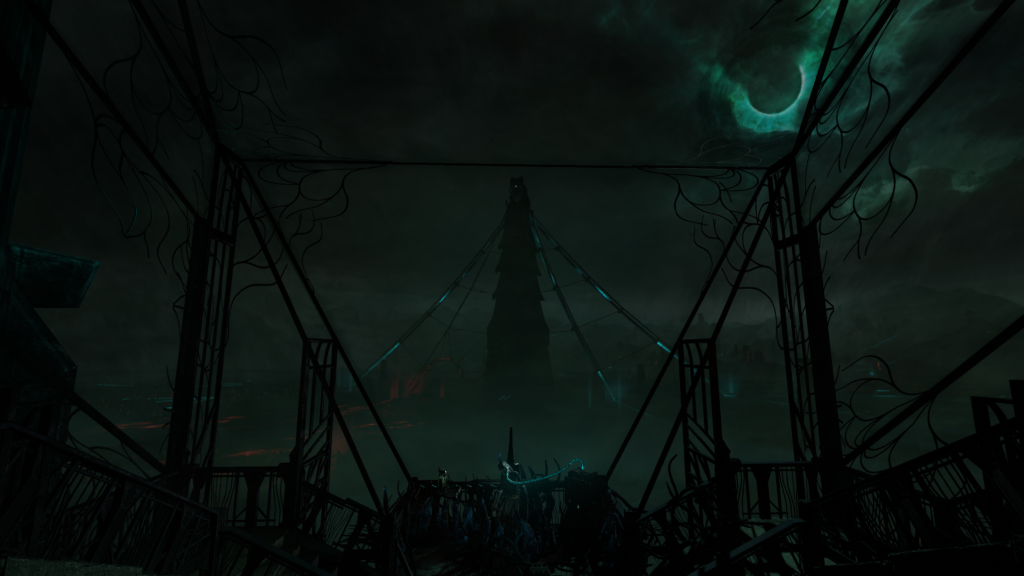
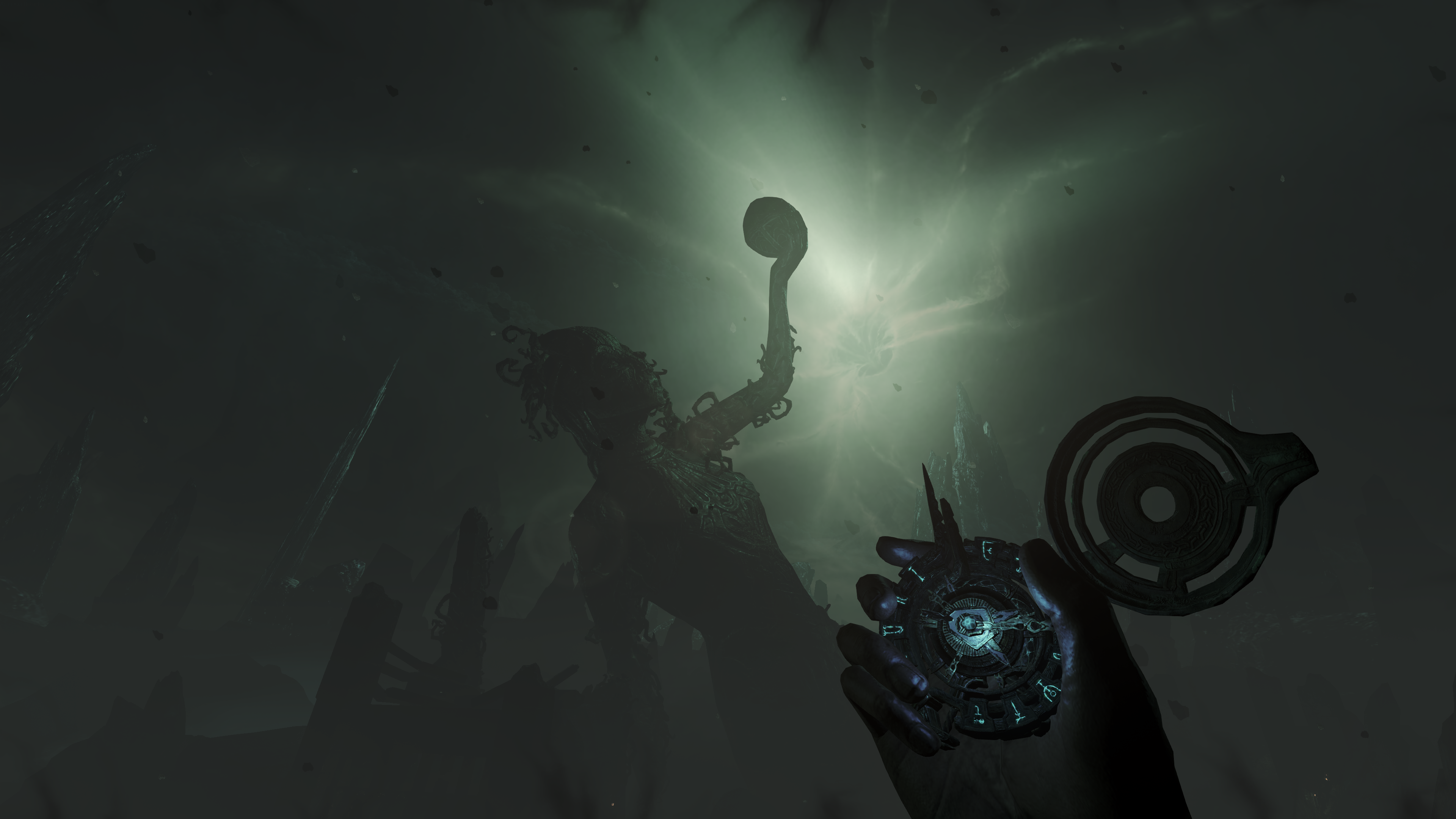


 (6 votes, average: 3.67 out of 5)
(6 votes, average: 3.67 out of 5)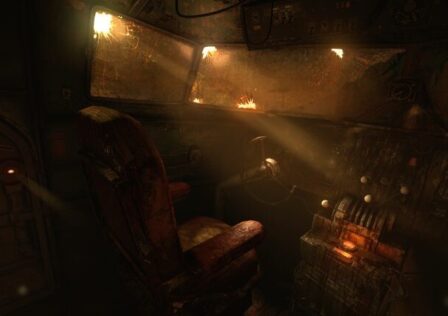
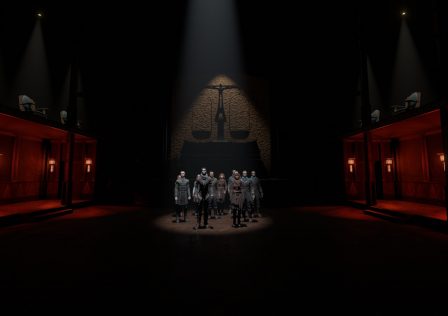

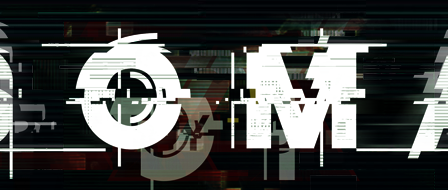
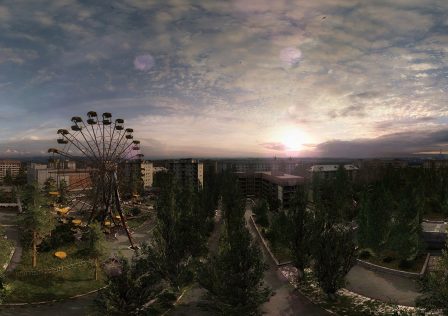

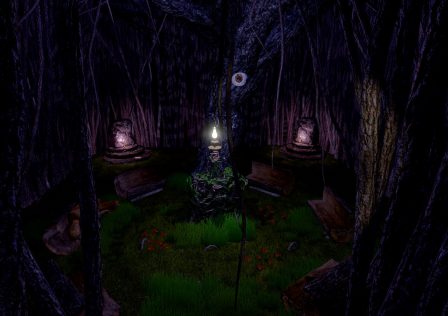

I’m pretty sure the game autosaves, but not very often. I think the amulet icon that sometimes appears in the lower right corner indicates that.
Missed this comment but I think you’re right, thanks for pointing it out.
I would add one more criticism which is that it’s unclear why this is even called “Amnesia” or “Rebirth.” They spelled out the reason for Daniel’s amnesia in the first game, A Machine for Pigs was a bit ambiguous with it but it was implied it had to do with Mandus’ sickness, but in Rebirth, it’s as though the writer himself had amnesia. Not only did they leave the reason behind Anastasia’s amnesia unexplained, the name “Rebirth” doesn’t make much sense either. What is being reborn in Rebirth’s world? As fas as I can tell, nothing. Narrative problems and infodumps… Read more »
Yeah this game was written by someone else and you can tell. Every Amnesia game had a different writer. As far as I can tell there is birth but no rebirth, though apparently I already have amnesia about this game!
I agree with everything you said. I’ve heard rumors that Thomas Grip isn’t with Frictional anymore but can find no evidence, though it is clear that Rebirth was written by someone new.
As far as I know, Thomas Grip is still part of the company, but names like Jens Nilsson (co-founder of FG), Mikael Hedberg (writer of The Dark Descent and SOMA) and Tom Jubert, who went on to write games like The Talos Principle, one of my personal favorite games of all time, have left the studio. Grip’s grip on the studio may not be as strong as it used to be; the company has grown “significantly” after SOMA’s release. It had like ten members back then, but now it has twenty-five. Maybe the name “Rebirth” has nothing to do with… Read more »